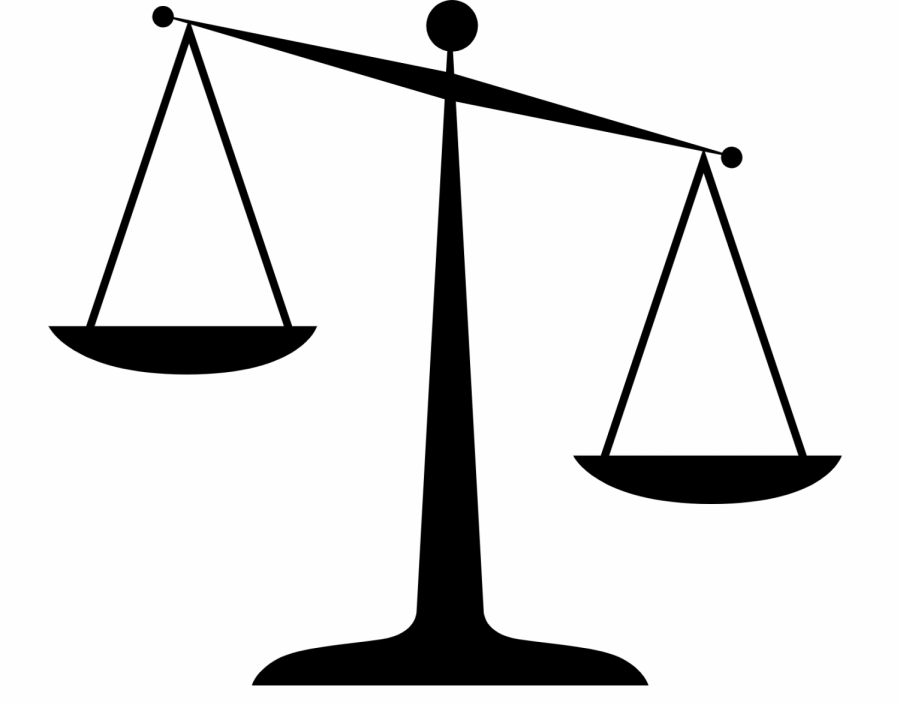American democracy isn’t democratic
Image used with permission from Google Commons
The American political system is tipped in favor of one party.
It’s been drilled into our heads via AP Gov, APUSH, and as far back as elementary school: America is a democracy: the people pick their representatives just as the founders envisioned. Perhaps they were envisioning democracy, but it would be charitable to characterize our modern system that way.
The Supreme Court recently overturned a half-century precedent of Roe. V Wade. According to Pew Research Center, the share of the public that thinks abortion should be legal in most or all cases has never been surpassed by those who believe abortion should be illegal in most or all cases. Currently, data demonstrates that 61% of Americans believe abortion should be legal in most or all cases, compared to just 37% that think abortion should be illegal in most or all cases.
Even more egregious denials of the will of the majority occur in Congress. For example, when it comes to gun control, 66% of Americans believe there should be stricter gun laws, with just 8% thinking there should be less strict gun laws, and the remaining 25% in support of current laws. The Safer Communities Act has been the only significant gun control legislation passed by Congress in nearly 30 years. Why is it so difficult for positions with broad public support to become law? The answer lies in the antidemocratic systems of our supposed democracy.
The Electoral College
The Electoral College was supposedly formed to protect an uninformed American electorate from an incredibly unqualified and tyrannical president. Instead, in 2016, it led to the victory of the only president with no prior military or government experience. Twice in the 21st Century, a Democrat has won the popular vote, but their opponent became president through receiving 270 electoral votes.
In 2020, then-candidate Joe Biden won the popular vote by a seven million vote margin, an overwhelming mandate from the voters about who the next president should be. However, he was just 42,000 votes spread across three states from an electoral college loss. According to data scientist David Shor, Democrats need to win the popular vote by about four percent to win the presidency.
This held true in 2020, as Joe Biden won the popular vote by 4.4 percent. The main reason for this skew is that despite the impression that the Electoral College makes the most populated states the most powerful, it actually props up the least populated states, many of which vote Republican.
The best example of this phenomenon is Wyoming, the least populated state, vs. California, the most populated state. In Wyoming, 578,000 people equal three electoral votes, the ratio of population per electoral vote is 192,000:1. In California, that same ratio is 718,000:1. Obviously, this is an extreme example, but the same trend plays out nationwide, leading to this four-point mountain Democrats must climb, just to win by a small margin in the Electoral College. In smaller states, your vote counts more.
In 2016, Hillary Clinton won the popular vote by three million votes, and 2.1 percent. She received just 227 electoral votes, well short of the required 270. 2020 was an exception to the rule. We are a nation of close elections, and that four-point mountain Democrats must climb makes a massive difference. For the foreseeable future, the Electoral College will require Democrats to win big, and require Republicans to not lose by too much.
The Senate
The same issue hurts Democrats in the Senate, and on an even more extreme scale. Using our most populated vs. least populated state example, in California there is one senator per 19,750,000 people. In Wyoming, that ratio is 279,000 per senator. A voter in Wyoming is 70x more represented than California voters. To put it another way, if 279,000 was the minimum threshold per senator, California would have 70 senators, and Maryland would have 21. Instead, every state has two senators.
The current Senate is a great reflection of how hard it is for Democrats to enact legislation supported by large majorities. The senate is currently split 50-50, and Vice President Kamala Harris serves as the tiebreaker. In a true democracy, the percentage of the population represented by each 50 senator group would be close to 50%.
This “equal” split leads to 50 Democratic senators representing 186,902,361 individuals. Meanwhile, the Republican 50 represents only 143,857,375 people — a gap of 43,044,986. These figures are derived from the 2020 census, and in states where one senator from each party exists, each side received the entire population. This gap is growing. In 2019, this same population using census estimates would have led to a roughly 41,549,808 gap according to Vox.
The improper apportionment of the Senate was historically wielded by the pro-slavery southern states to block anti-slavery legislation. The same process occurred with Civil Rights legislation. It continues today, as unanimous Republican opposition on most of the Biden agenda means legislation is typically only as progressive as the most conservative Democrat, in this case West Virginia senator Joe Manchin.
If every senate vote counted the same, there would be a substantial Democratic majority, instead of the fragile 50-50 split that exists. Referencing the earlier 43,044,986 representation gap, Democrats represent roughly 57% of all Americans, yet hold just 50 Senate seats. Even within the senate, there is the filibuster, an undemocratic tool within an undemocratic legislative body.
The House of “Representatives”
There are a variety of issues that exist in the House, but key among them are gerrymandering, and how that process denies the will of the majority. After the once-per-decade census, Congressional district lines are redrawn to accommodate population changes. Sadly, this process often leads to politicians picking their voters, and not the other way around.
To be clear, Republicans are not the only ones who gerrymander. In states like Maryland, Illinois, and New York, the Congressional delegation does not match the population. What prevents this from being a “both sides” issue, as the media often attempts to make it, is that congressional Democrats support legislation to end partisan gerrymandering nationwide and have voluntarily established citizen or bipartisan commissions in some states they control.
Polling and elections analyst Dave Wasserman of the Cook Political Report projects that Republicans have the ability to win a House majority in the 2022 elections through using their redistricting power alone.
The other House bias against Democrats is the Median District bias. According to Center for Politics, the Median District bias is as follows: if you lined up all the districts from most Democratic to most Republican, the median House district would be directly in the middle: number 218 out of 435 if no third party or independent candidates won seats.
For example, in 2018, Democrats won the national popular vote by 8.6% (53.4% to 44.8%). Democrat Josh Harder won the median House district, California’s 10th, by 4.6% (52.3 to 47.7). If the whole nation voted 4.7% more Republican, Democrats would have lost CA-10 and control of the House while winning the national popular vote by 3.9%. Republicans had a 3.9% Median District Bias.
The Supreme Court
This issue is a product of the other antidemocratic institutions. When presidents who didn’t win the popular vote appoint Supreme Court justices confirmed by a Senate population that does not represent that majority of Americans, you have an antidemocratic court.
Three of the nine justices fit this definition, all of them appointed during the Trump years. One of these three filled a seat that Republicans refused to consider former President Barack Obama’s nominee for. Another was appointed when voting already began. The third of these three was accused of sexual assault at his job interview. Two other justices were appointed by the popular-vote-loser George W. Bush, forming a 6-3 right-wing majority despite Republicans winning just one out of the last eight presidential popular votes.
These structures are how abortion rights, something with broad public support, can be made dependent on the state one lives in. 2022 is shaping up to be a close race, with 538’s generic ballot polling average between Democrats and Republicans essentially tied less than a week before election day. It isn’t the landslide elections when systemic biases are most clearly felt. It’s the close elections like 2022, when just a small skew can tip the balance in one of the most consequential midterms in history. As a country that places the title “leader of the free world” on its president, and refers to itself as a “beacon of democracy,” it’s well past time we live up to our rhetoric.
Your donation will support the student journalists of Thomas S. Wootton High School. Your contribution will allow us to purchase equipment and cover our annual website hosting costs.
Ethan is a 2023 graduate.







![The 2025-2026 Editorial Board Alex Grainger, Cameron Cowen, Helen Manolis, Emory Scofield, Ahmed Ibrahim, Rebekah Buchman, Marley Hoffman, Hayley Gottesman, Pragna Pothakamuri and Natalie Pak (Chase Dolan not pictured) respond to the new MCPS grading policy. “When something that used to be easy suddenly becomes harder, it can turn [students’] mindset negative, whereas making something easier usually has a better impact. I think that’s where a lot of the pushback comes from. But if you put emotions aside, I do think this change could help build stronger work ethic,” Ibrahim said.](https://woottoncommonsense.com/wp-content/uploads/2025/09/fqr5bskTXpn0LRQMmKErLuNKdQYBlL726cFXBaWF-600x450.jpg)